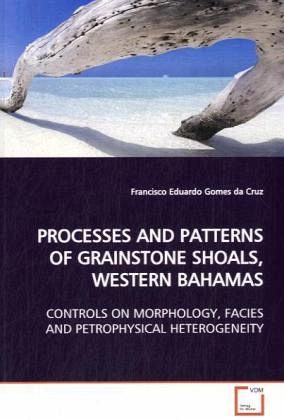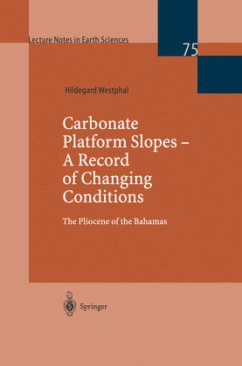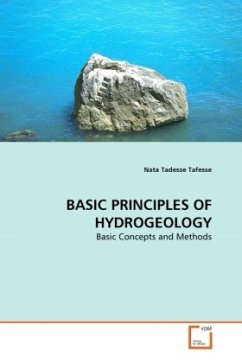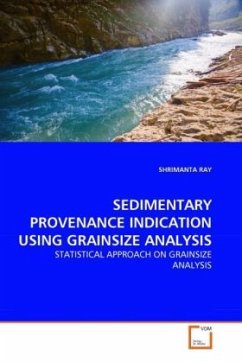
PROCESSES AND PATTERNS OF GRAINSTONE SHOALS, WESTERN BAHAMAS
CONTROLS ON MORPHOLOGY, FACIES AND PETROPHYSICAL HETEROGENEITY
Versandkostenfrei!
Versandfertig in 6-10 Tagen
45,99 €
inkl. MwSt.

PAYBACK Punkte
23 °P sammeln!
Bahamian Holocene and Pleistocene deposits providekey evidence to understand processes and patterns ofcarbonate shoals. New datasets ofhigh-resolution satellite images, acoustic Dopplermeasurements, sub-bottom profiles, core and sedimentsamples elucidate factors in the deposition of ashoal and assess how facies and diagenesiscontrol petrophysics of similar ancient deposits.Holocene morphology are linked tohydrodynamics. Seismic data image Holocene shoalsand reveal how antecedent Pleistocene topographyaffected its morphology and evolution. Core analysisof a subsurface Pleistocene section compar...
Bahamian Holocene and Pleistocene deposits provide
key evidence to understand processes and patterns of
carbonate shoals. New datasets of
high-resolution satellite images, acoustic Doppler
measurements, sub-bottom profiles, core and sediment
samples elucidate factors in the deposition of a
shoal and assess how facies and diagenesis
control petrophysics of similar ancient deposits.
Holocene morphology are linked to
hydrodynamics. Seismic data image Holocene shoals
and reveal how antecedent Pleistocene topography
affected its morphology and evolution. Core analysis
of a subsurface Pleistocene section compares facies
architecture with the Holocene and examines
facies-petrophysical relationships in oolitic
reservoirs and compares relationships with ancient
limestones. This book integrates both modern and
ancient carbonate systems to offer a better
understanding of the controls on shoal morphology,
and petrophysics that are crucial to the oil
industry. It is hoped that this book can be used as
a guide for interpreting heterogeneity and reservoir
properties of ancient carbonate shoals when exploring
new plays or pursuing efficient development of such
reservoirs.
key evidence to understand processes and patterns of
carbonate shoals. New datasets of
high-resolution satellite images, acoustic Doppler
measurements, sub-bottom profiles, core and sediment
samples elucidate factors in the deposition of a
shoal and assess how facies and diagenesis
control petrophysics of similar ancient deposits.
Holocene morphology are linked to
hydrodynamics. Seismic data image Holocene shoals
and reveal how antecedent Pleistocene topography
affected its morphology and evolution. Core analysis
of a subsurface Pleistocene section compares facies
architecture with the Holocene and examines
facies-petrophysical relationships in oolitic
reservoirs and compares relationships with ancient
limestones. This book integrates both modern and
ancient carbonate systems to offer a better
understanding of the controls on shoal morphology,
and petrophysics that are crucial to the oil
industry. It is hoped that this book can be used as
a guide for interpreting heterogeneity and reservoir
properties of ancient carbonate shoals when exploring
new plays or pursuing efficient development of such
reservoirs.












